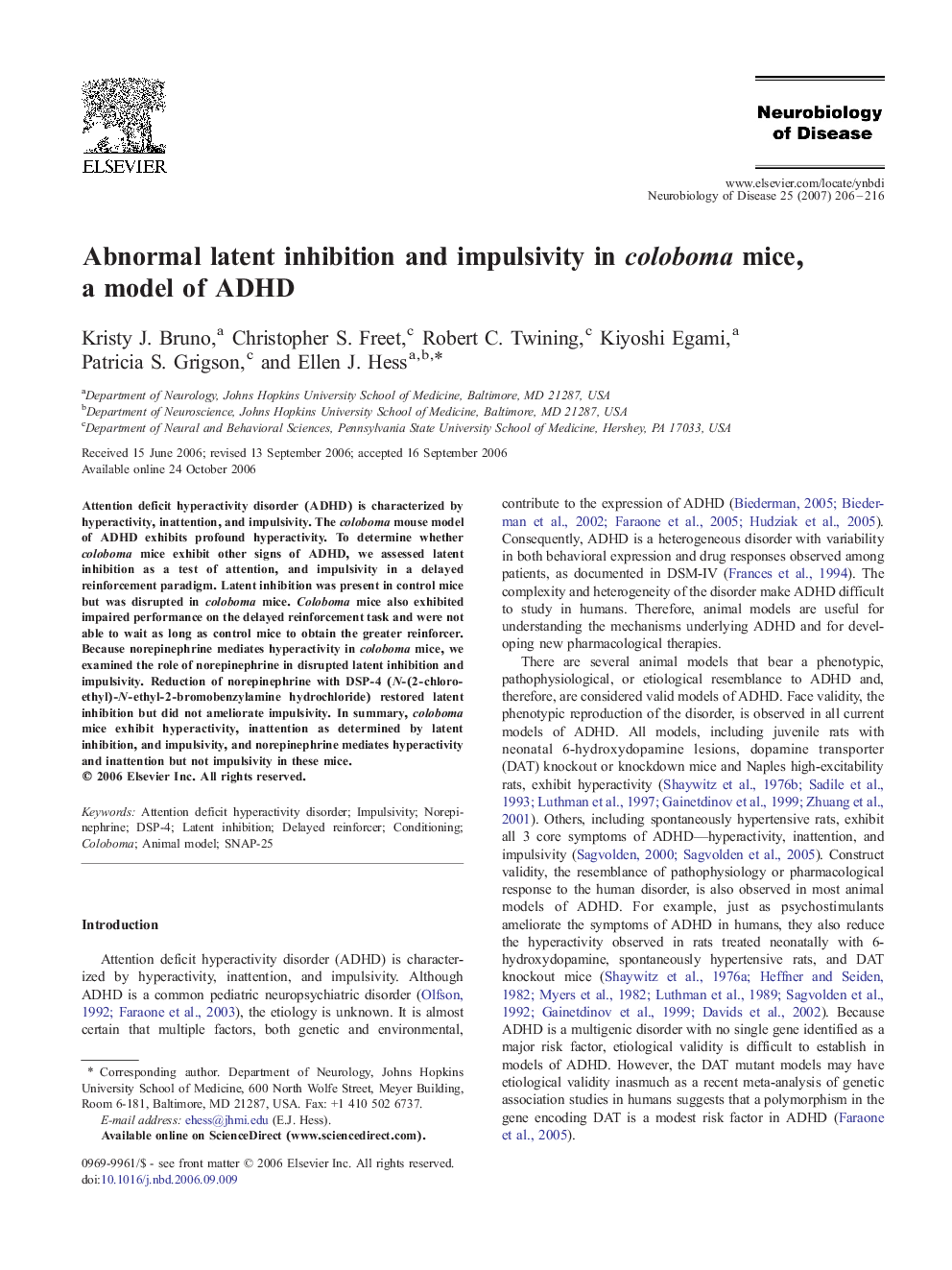| Article ID | Journal | Published Year | Pages | File Type |
|---|---|---|---|---|
| 3070896 | Neurobiology of Disease | 2007 | 11 Pages |
Attention deficit hyperactivity disorder (ADHD) is characterized by hyperactivity, inattention, and impulsivity. The coloboma mouse model of ADHD exhibits profound hyperactivity. To determine whether coloboma mice exhibit other signs of ADHD, we assessed latent inhibition as a test of attention, and impulsivity in a delayed reinforcement paradigm. Latent inhibition was present in control mice but was disrupted in coloboma mice. Coloboma mice also exhibited impaired performance on the delayed reinforcement task and were not able to wait as long as control mice to obtain the greater reinforcer. Because norepinephrine mediates hyperactivity in coloboma mice, we examined the role of norepinephrine in disrupted latent inhibition and impulsivity. Reduction of norepinephrine with DSP-4 (N-(2-chloroethyl)-N-ethyl-2-bromobenzylamine hydrochloride) restored latent inhibition but did not ameliorate impulsivity. In summary, coloboma mice exhibit hyperactivity, inattention as determined by latent inhibition, and impulsivity, and norepinephrine mediates hyperactivity and inattention but not impulsivity in these mice.
